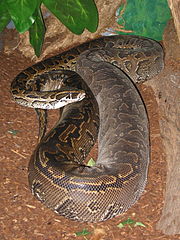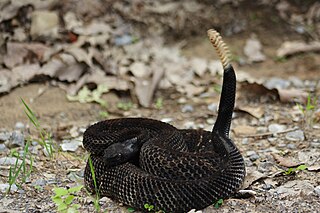At least 45 species of non-native reptiles and amphibians have established breeding populations in Florida. The most notorious of these, the Burmese Python, Python bivittatus, has been much in the news in recent years. Recently, however, another of the state’s introduced giant constrictors grabbed the headlines.
On Sept. 10, 2013, a Northern African Rock Python, P. sebae, killed a 60 pound husky in a suburban yard near the Everglades. While much has been made of the threats posed by large constrictors, what interested me most about this incident was the fact that the snake involved was quite small by Rock Python standards. Despite being only 10 foot long and 38 pounds in weight, the snake was able to overcome and kill a 60 pound dog.
Based on my experiences with large constrictors in the Bronx Zoo and the wild, I would guess that the attack was defensive in nature. The only 60 pound snake meal I’ve witnessed (a White-tailed Deer) involved a 17 foot long, 215 pound Green Anaconda…and its huge body appeared stretched to its limit. Read More »
 That Reptile Blog – Reptile, Amphibian and Exotic Pet Care and Information
That Reptile Blog – Reptile, Amphibian and Exotic Pet Care and Information





